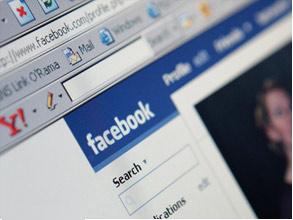Zuckerberg’s Gamble: Facebook Thrives Despite Redesign
By Macklin White In Social Media, Social Networking
From the outset it was clear that Facebook founder and CEO Mark Zuckerberg regarded Twitter as a serious contender in the social-networking world. Those beliefs manifested themselves in the redesign, which aped Twitter’s simplicity and real-time news feed. Twitter began to catch on with celebrities, journalists and average Joes, in part because of the quickness and ease associated with tweeting.
The days and weeks following the redesign saw poll after poll suggesting that Facebook users were dissatisfied with the new layout and the archaic inbox feature. Longtime users were suddenly inundated with photo albums courtesy of acquaintances they barely knew. In short, they missed the old, familiar site.
Even as many loyal Facebook users signed up for Twitter accounts, Zuckerberg stood firm. His position seemed to be that there was enough room for two titans in the social networking racquet. Sure enough, Facebook has not gone the way of MySpace, the older-generation networking site that has diminished in popularity these last few years. On the contrary, Facebook has remained profitable, and the company plans to hire 500 new employees in a year when layoffs have been the norm.
Whatever complaints and critiques users might hurl at Facebook, there’s no arguing with the site’s continued popularity in terms of page hits and unique visitors. Alexa.com ranks Facebook in second place – behind only Google – in its list of top 500 sites on the Web. In comparison, Twitter sits back in the 13th position.
Still, users have plenty of niggling complaints about Facebook that remain unresolved. The “Highlights” section, which appears to the right of the general news feed, is confusing at best and superfluous at worst. From a user’s perspective, the Highlights seem to collect an array of stale items from the news feed and republish them in random order.
The Facebook faithful have also expressed annoyance about a phenomenon I’ve decided to dub “The Rise of the Survey.” During Facebook’s infancy, surveys represented an innocuous way to kill time and compare results with friends. At some point, survey application designers created a monster. Users have grown tired of being constantly bombarded with frivolous survey results.
From a marketing perspective, Facebook does appear to have a leg up on the competition. Entrepreneurs can create unique “fan pages” over the social network and implore their friends and acquaintances to sign up for updates. Those same entrepreneurs have the option of passing along tidbits about the business via Twitter feed, but that strategy lacks the ease and convenience of a single, centralized information source.
For now it appears that Facebook has carved out a distinct niche in the social-networking landscape, allowing it to coexist with Twitter indefinitely. Selling ad space has proved to be a huge economic boon for the company – one that has yet to be matched by Biz Stone and other Twitter executives. Where the two sites go from here is anyone’s guess, but it looks like a two-horse race all the way.


No Comment